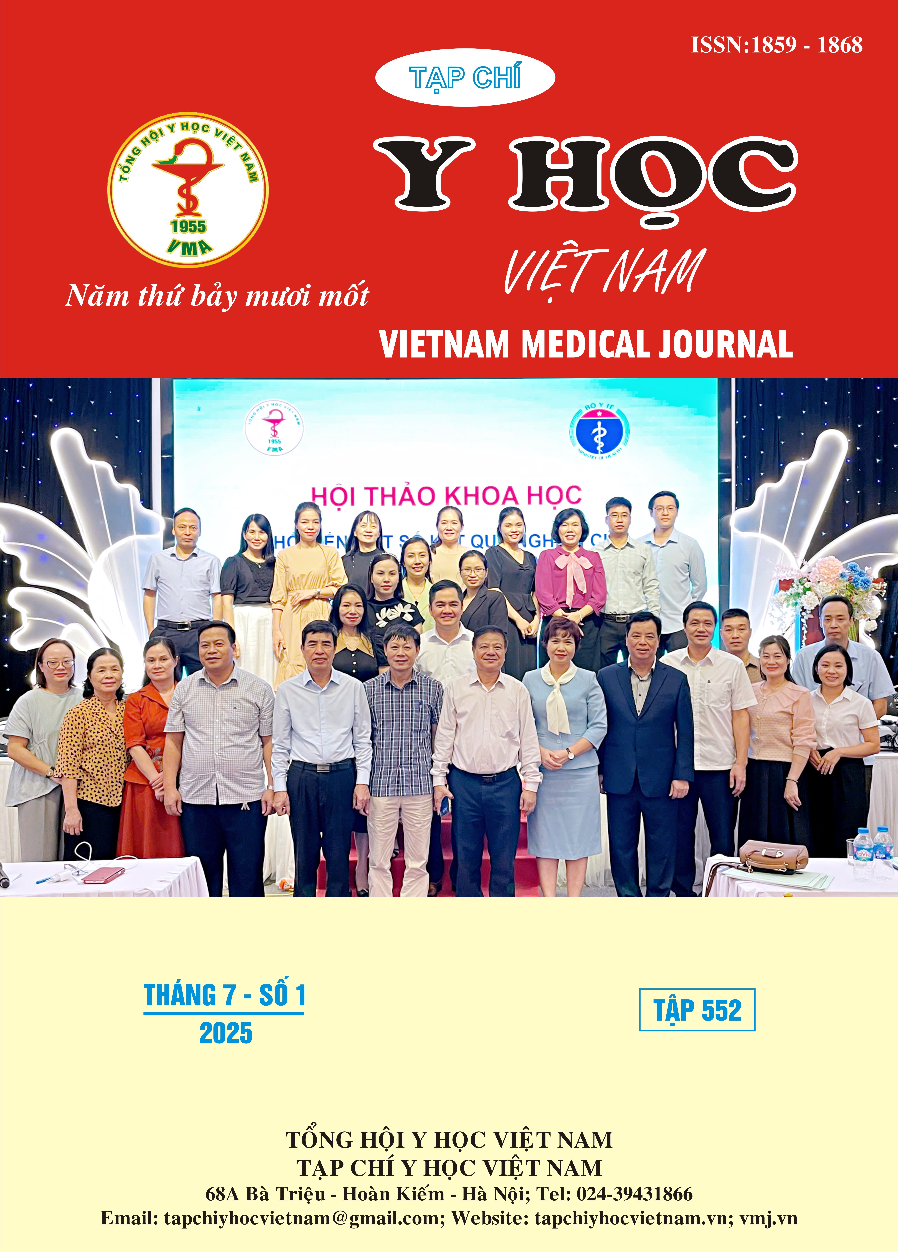VIETNAMESE VERSION OF SUN EXPOSURE AND PROTECTION INDEX (SEPI): A VALIDATION STUDY
Main Article Content
Abstract
Skin cancer develops due to the uncontrolled division of skin cells. Although the incidence of skin cancer in Asian countries, including Vietnam, is relatively low, the tropical climate and frequent long-term exposure to ultraviolet radiation (UVR) make sun protection still extremely necessary and urgent. Currently, there is no reliable scale in Vietnam to evaluate skin exposure and protection habits against sunlight. Standardize the Vietnamese version and evaluate the reliability of the Sun Exposure and Protection Index (SEPI) scale. Our study was conducted from October 2024 to December 2024 on 47 students at Hanoi Medical University, followed by a second survey two weeks later. The results were used to measure internal consistency using Cronbach’s alpha coefficient and test-retest reliability through the Intra-Class Correlation (ICC). The Vietnamese version of the SEPI questionnaire demonstrated high internal consistency with a Cronbach's alpha coefficient of 0.755. The test-retest reliability between the two responses to the questionnaire was very high with an ICC value of 0.927. The study indicates that the Vietnamese version of the SEPI scale is a valid tool for assessing sun exposure and skin protection habits in the Vietnamese population.
Article Details
Keywords
Skin cancer, skin exposure and protection index, standardization, SEPI
References
2. Bray F, Laversanne M, Sung H, et al. Global cancer statistics 2022: GLOBOCAN estimates of incidence and mortality worldwide for 36 cancers in 185 countries. CA Cancer J Clin. 2024;74(3):229-263. doi:10.3322/caac.21834
3. Ferlay J, Colombet M, Soerjomataram I, et al. Cancer statistics for the year 2020: An overview. Int J Cancer. Published online April 5, 2021. doi:10.1002/ijc.33588
4. Sample A, He YY. Mechanisms and prevention of UV-induced melanoma. Photodermatol Photoimmunol Photomed. 2018;34(1):13-24. doi:10.1111/phpp.12329
5. Rigel DS. Cutaneous ultraviolet exposure and its relationship to the development of skin cancer. Recent Adv Photoprotection. 2008;58(5, Supplement 2):S129-S132. doi:10.1016/j.jaad. 2007.04.034
6. Barnes PW, Robson TM, Neale PJ, et al. Environmental effects of stratospheric ozone depletion, UV radiation, and interactions with climate change: UNEP Environmental Effects Assessment Panel, Update 2021. Photochem Photobiol Sci Off J Eur Photochem Assoc Eur Soc Photobiol. 2022;21(3): 275-301. doi:10.1007/ s43630-022-00176-5
7. Glanz K, Yaroch AL, Dancel M, et al. Measures of sun exposure and sun protection practices for behavioral and epidemiologic research. Arch Dermatol. 2008;144(2): 217-222. doi:10.1001/ archdermatol.2007.46
8. Borschmann RD, Cottrell D. Developing the readiness to alter sun-protective behaviour questionnaire (RASP-B). Cancer Epidemiol. 2009;33(6): 451-462. doi:10.1016/j.canep. 2009.09.003
9. Detert H, Hedlund S, Anderson CD, et al. Validation of sun exposure and protection index (SEPI) for estimation of sun habits. Cancer Epidemiol. 2015;39(6): 986-993. doi:10.1016/ j.canep.2015.10.022
10. Karlsson E, Hübner IM, Haluza D, Falk M. Validation of SEPI in German-A German Translation of the Sun Exposure and Protection Index. Int J Environ Res Public Health. 2020;17(17). doi:10.3390/ijerph17176172


